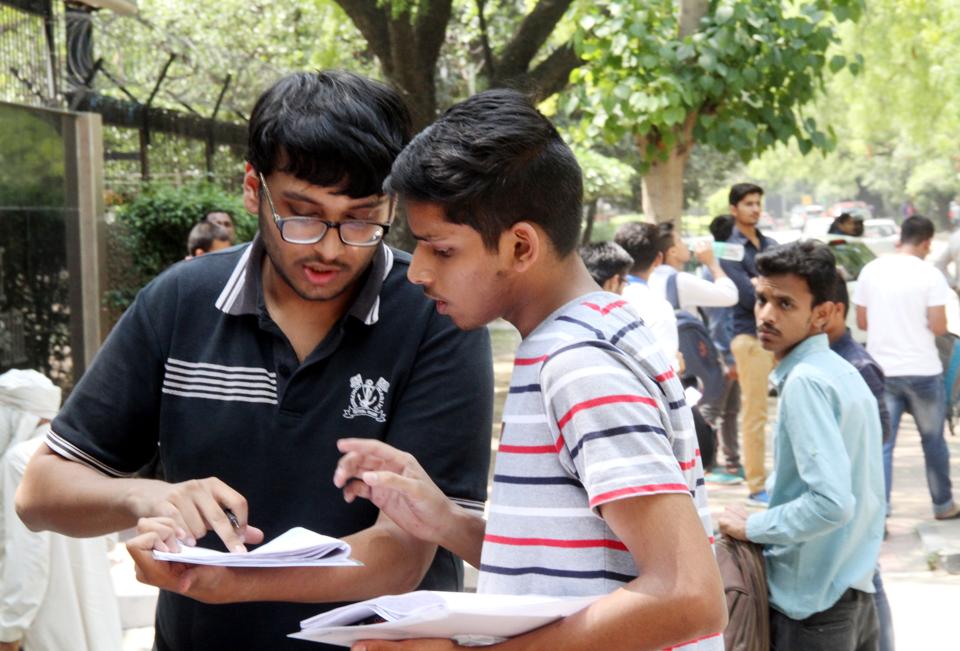In 2023, Percentage of Indians appearing in TOEFL for secondary education abroad rising, says ETS

Percentage of Indians appearing in TOEFL for secondary education abroad rising, says ETS
The percentage of Indians taking the Test of English as a Foreign Language (TOEFL) for the purpose of pursuing secondary education and certifications abroad has been steadily increasing over the years. On the other hand, there has been a decline in the number of Indians taking the TOEFL for immigration purposes. This trend has been observed and reported by the Educational Testing Service (ETS), headquartered in Princeton, which is responsible for conducting the TOEFL and Graduate Record Examination (GRE).
The shift in the aspirations of the younger demographic in India appears to be driving this change. As more young Indians seek to pursue higher education and certification programs abroad, they are taking tests like TOEFL to meet the language proficiency requirements of educational institutions overseas. This reflects a growing interest among Indian students to gain international exposure and qualifications.
Conversely, the decrease in the number of Indians taking TOEFL for immigration purposes could be due to changing immigration policies or preferences, as well as a potential shift in the motivations of individuals regarding overseas migration.
Overall, the changing patterns in TOEFL test-takers in India provide insights into evolving educational and career aspirations among the country’s youth, with a greater focus on international education and qualifications.
According to data exclusively accessed by PTI, there has been a noticeable shift in the reasons why Indian students are taking the Test of English as a Foreign Language (TOEFL) examination. The data reveals a significant increase in the percentage of Indian test-takers opting for TOEFL to pursue secondary education abroad, attain certifications, or seek admission to international schools. In 2021, this group represented 5.83 percent of total TOEFL aspirants, and by 2022, it had risen to 7.77 percent.

Conversely, there has been a decline in the percentage of Indians using TOEFL for employment or immigration purposes, decreasing from 8.19 percent in 2021 to 7.22 percent in 2022. This trend, as confirmed by top officials at ETS, has been ongoing since 2018, reflecting a more sustained change in the aspirations of Indian test-takers.
Furthermore, the data underscores that a substantial majority of Indian TOEFL test-takers continue to focus on higher education, with an increase in those pursuing graduate or postgraduate business programs or other graduate and postgraduate programs, emphasizing the enduring importance of education in international institutions for Indian students.

Sachin Jain, the Country Manager of ETS India and South Asia, highlighted the significant shift in aspirations among Indian students, particularly in the context of international education. According to Jain, ETS data indicates a notable trend in which an increasing number of secondary education students are choosing to take the TOEFL test. This trend, he explained, underscores the evolving aspirations of the younger demographic in India, particularly in their pursuit of international educational opportunities.
Moreover, Jain provided insights into the growth of TOEFL test takers in India over the past years. In 2021, there was a remarkable 53 percent increase in the number of Indian test takers compared to the previous year. The upward trajectory continued into 2022, with a 59 percent rise in the number of TOEFL test takers compared to 2021. These statistics further emphasize the growing interest among Indian students in pursuing international education and the importance of language proficiency assessments like TOEFL in facilitating these aspirations.
Sachin Jain, the Country Manager of ETS India and South Asia, pointed out two significant factors contributing to the changing landscape of Indian students pursuing education abroad.
First, Jain noted that numerous industry reports predict a substantial increase in the number of Indian students heading abroad, with estimates reaching 2.5 million over the next three to five years. This represents a compelling macro-level trend that is driving the aspirations of Indian students toward international education.
Second, Jain emphasized the greater facilitation and support provided by foreign countries to Indian talents. He highlighted that several major destination markets for Indian students, such as Australia, Canada, and the UK, have revamped their approaches to attract and accommodate Indian students. This proactive approach by foreign countries is creating a macro-level pull factor that is reshaping the landscape for Indian students aspiring to study abroad.
These combined macro-level factors, including the rising demand for international education and the welcoming approach of destination countries, are playing a pivotal role in shaping the aspirations and opportunities of Indian students in the global education arena.
The top cities in India that have the highest number of TOEFL test takers are New Delhi, Mumbai, Bengaluru, Pune, Hyderabad, Gurugram, Chennai, Kolkata, and Ahmedabad. These cities represent major hubs of educational and professional aspirations, reflecting the broad demographic of Indian students and professionals seeking language proficiency certification through TOEFL.
Starting from July 26, ETS implemented a series of changes to enhance the TOEFL test-taking experience. These changes were aimed at optimizing the process for candidates. Some of the notable changes included reducing the test duration to less than two hours (as opposed to the previous three hours) and providing candidates with the ability to view their official score release date immediately upon completing the test. These modifications were introduced to streamline the testing process and provide test takers with more information and convenience.




